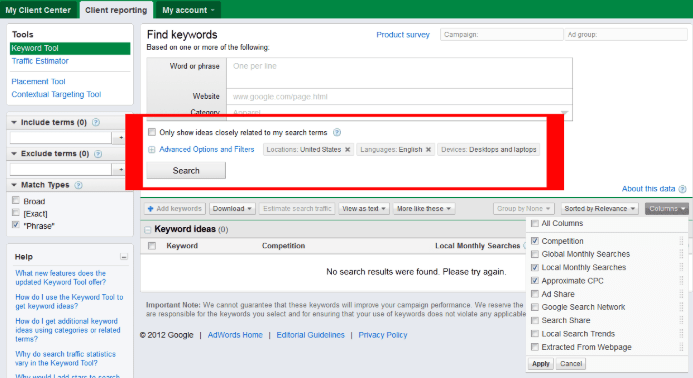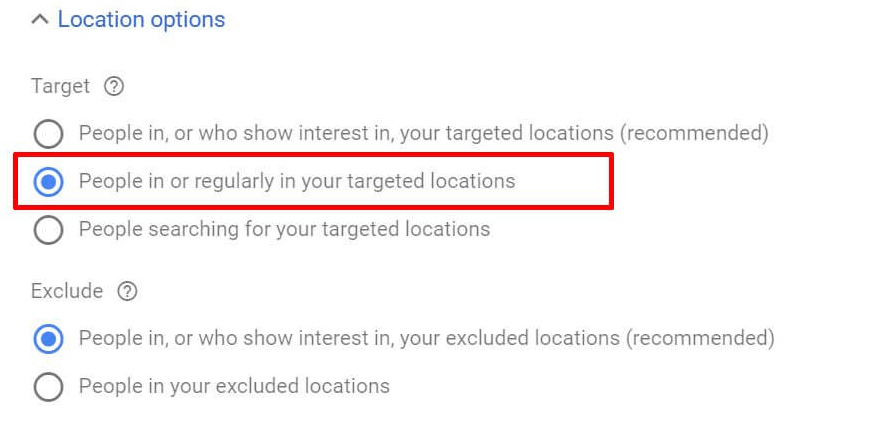At Fujisan, we often hear people ask, “How do I know my digital advertising is performing at its best?” Well, if you aren’t auditing your PPC campaign, you don’t. The good news is that a PPC audit isn’t rocket science. Here are some areas to consider when approaching yours:
Past Traffic & Performance
This is a pretty standard foundation to start from. After all, how can you know how the account performs if you can’t compare to past metrics? Just like with all analysis, numbers need context.
Ideally, the account in question will have performance data for at least one year so you can see data that highlights seasonal shifts. Regardless of the account’s age, you should still pull its all-time data to analyze the account over the long term. When assessing this information, we recommend placing a particular emphasis on a specific key goal or metric to directly report on how well the account is helping accomplish goals, such as:
- Conversions, which is any event you define, such as:
- Form completions
- Phone calls
- Sales and purchases
- Conversion rate
- Cost per conversion
- Brand awareness metrics, like:
- Impressions
- Clicks
- Click-through rate (CTR)

Those with goals to drive more conversions typically wish to drive more specific actions from people who visit their website, like boosting call volume or sales for a newly-launched product. Brand awareness metrics, like impressions, clicks, and CTR, appeal to clients who want to drive more inbound site traffic. Whichever you choose, ask yourself — are the numbers falling? Could volume be improved? Is the cost per acquisition too high or conversion rate too low? Use your insights from the data to provide actionable feedback and next steps for the account you’re auditing.
There are other questions worth asking, these are just starting points. Just like the metrics you choose to focus on, the questions you ask will depend on what the objective of your ad campaigns has been and how that objective has changed over time.
Campaign Qualities & Hierarchy
This encompasses many more sub-factors than past performance. That’s because it takes all the context you gain from analyzing your past performance and uses that as the foundation on which to improve.
Campaign & Account Settings
First, you’ll look at both campaign and account settings to consider how they can be changed to improve your performance. For the former, this entails looking at:
- Your current bid strategy
- Daily budget
- Networks
- Ad rotation
- Ad schedule
- Bid adjustments
For example, while analyzing past traffic, did you find better performance in the morning? If so, you might consider increasing time of day bid adjustments during the morning and decreasing in the evening. When evaluating account settings, you’ll want to include notes on conversions, tags, whether or not auto-tagging is enabled, and linked accounts with Google Ads and/or Google My Business in your audit as well.
Campaign Types
Within your account, you’ll also want to assess your campaign types, and seek to answer the following questions.
- Are you primarily running search campaigns?
- What about display campaigns?
- Video or shopping campaigns?
- Are they running locally, regionally, or nationally?
Consider the performance and goals of each campaign type and which align most with your campaign objectives. After cross-examining the past performance and key metrics of each campaign type, recommend any changes to campaign budget split if needed. For example, if search campaigns have impressive CVRs and low CPAs, but have low budgets, recommend moving more into search and forecast how performance will change with that extra budget.
Campaign & Ad Group Structure
Similarly, you’ll want to look at not just the types of campaigns, but the structures of your campaigns and ad groups. Ask yourself the following questions:
- How is it built — and why is it built that way?
- Is it structured on theme, geography, sales region, or something else?
- What’s the reasoning behind the campaign structure?
If the goal of the campaign is to drive towards a set objective, like leads from forms or new newsletter subscriptions, include recommendations in your audit for what would improve in the account as a result of restructuring the campaigns.
And then there’s the last part of assessing your campaign hierarchy, which has so many little sub-parts that we’re giving it its own special section.
Targeting
Targeting is a huge part of evaluating your campaign simply because there is so many factors here.
For search campaigns, probably the biggest factor is your keywords. If your keywords don’t accurately reflect what they need to, your campaign is automatically performing below where it could. In analyzing this, we look to answer the following questions:
- How much spend is wasted from irrelevant keywords or searches? This will give you insight into how many leads you could have driven with a smarter keyword strategy.
- How many keywords are in your account? The more traffic-driving keywords means more people are likely to see your ads.
- Are they all more generic (and subsequently will be more often searched for, but have more competition for space) or more specific and longer (which will be less often searched, but have less competition)?
- What match types are used? See if there is equal split among broad, exact, and phrase match or if keywords lean more towards one match type.
- Don’t forget about negative keywords! Accounts with little to no negative keywords

Example of Advanced Search Options
When running a Google Search or Google Display Network campaign, you’ll also want to evaluate your targeted locations and excluded locations. This is pretty self-explanatory, although its significance can vary from business to business. Obviously, if your campaign is to raise awareness for a brick-and-mortar establishment in, say, Seattle, running ads in Phoenix is a waste.
If your campaign is for an eCommerce site, however, location settings might not be as black and white — but don’t think that means they’re not still important. Just because people can potentially make purchases from anywhere does not mean your target market is located anywhere. For example, don’t run ads for your online cross-country ski gear store in Louisiana in the summertime. And while environmentally-based eCommerce sites are an obvious version of this, you can still always identify areas where your target market is more likely to be no matter how you specialize.
Which brings us to questions we answer around audiences, like:
- Which age group is more inclined towards your product?
- What interests do they have and what are their values?
- Do campaigns have the right remarketing, affinity, or in-market audiences enabled?
- Are you excluding irrelevant audiences in your campaigns?

Example of Targeted Location Options
You can ask endless questions here. The important thing is that identifying your audience and their corresponding internet behavior ensures your campaign isn’t wasting resources targeting people who are unlikely to have interest in you.
As a result, understanding your audience and location then helps you identify ideal placements, which are websites, apps, or ad units within Google Display Network on which you can advertise. Here we look into questions like:
- Where does your audience visit, and how can you pique their interest here?
- Are there placements driving clicks without conversions to manually exclude?
- Are your ads themselves being presented effectively?
Whether text, image, or video ads, this means having effective copy and calls to action, responsive ad-to-destination loading time, and that there are at least three to five ads per ad group. You’ll also want to evaluate image ads by the efficacy of different image sizes and contents. For video ads, analyze the performance of ad length. Are the 6-second spots the top performer or do the 15-second spots drive the most conversions?
In the end, targeting is a combination of intuitive understandings of your audience and creative deep-dives into figuring out their nuances.
Relatively frequent PPC audits ensure you are getting the most from your campaigns. By staying vigilant, paying attention to data, and using that occasional human-powered creative insight, your digital marketing can give you the foundation to move forward with confidence.




